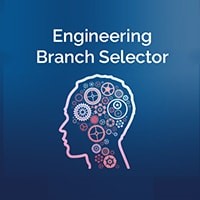A Circle Inspector (CI) is a police officer of the rank of inspector who is in charge of a police circle. A police circle is a sub-division of a police district. It typically consists of two or more police stations.
The CI is responsible for the law and order of the police circle. He/She supervises the work of the police stations in the circle and ensures that they are functioning effectively. The CI is also responsible for investigating serious crimes and coordinating the efforts of the police stations in the circle to prevent and detect crime.
Introduction

1. Purpose of the Document
This document provides an in-depth insight into the critical role of a Circle Inspector within the realm of law enforcement and public safety. It aims to shed light on the responsibilities, qualifications, challenges, and evolving dynamics associated with this significant position.
2. Role and Significance of a Circle Inspector
A Circle Inspector is a pivotal law enforcement officer, typically operating within a specific geographical region or jurisdiction known as a “circle.” Their role is multifaceted, encompassing law enforcement, investigation, public safety, and community engagement. They serve as a crucial link between higher-ranking officials and frontline officers, playing a vital role in maintaining law and order.
Responsibilities of a Circle Inspector
1. Law Enforcement and Public Safety
- Supervision of Subordinate Officers: Oversee and manage the work of police personnel within the designated circle, ensuring law enforcement activities are carried out effectively and in accordance with legal procedures.
- Patrolling and Surveillance: Organize and conduct regular patrols, surveillance, and checks to deter criminal behavior, respond swiftly to incidents, and maintain a visible police presence in the community.
2. Investigation and Reporting
- Criminal Investigations: Oversee and direct criminal investigations, ensuring thorough and efficient processes that gather evidence, identify suspects, and bring cases to a resolution through legal proceedings.
- Filing Reports and Documentation: Maintain accurate records of investigations, incidents, arrests, and other activities, ensuring timely and detailed reporting for administrative and legal purposes.
3. Community Engagement and Public Relations
- Community Outreach: Establish and maintain positive relations with the local community, engaging in community outreach programs to understand concerns, address grievances, and foster cooperation between law enforcement and the public.
- Public Awareness and Education: Educate the community about various legal and safety aspects, organizing workshops, seminars, and awareness campaigns to enhance public understanding of their rights, responsibilities, and safety measures.
Qualifications and Skills
1. Educational Background and Training
- Bachelor’s Degree: Possession of a Bachelor’s degree in Criminology, Law Enforcement, Criminal Justice, or a related field is typically required. Advanced degrees can be advantageous.
- Police Academy Training: Completion of training at a recognized police academy, focusing on law enforcement techniques, criminal procedures, conflict resolution, and relevant legal aspects.
- Specialized Courses: Additional certifications or courses in areas such as forensic investigation, crisis management, public administration, or leadership can enhance qualifications.
2. Essential Skills and Competencies
- Leadership and Decision-Making: Strong leadership skills to guide and motivate a team, make sound decisions in challenging situations, and effectively delegate tasks.
- Communication and Interpersonal Skills: Exceptional communication abilities, both verbal and written, to effectively interact with diverse individuals, resolve conflicts, and represent the law enforcement agency professionally.
- Problem-Solving and Analytical Thinking: Proficiency in analyzing complex situations, identifying problems, and developing innovative solutions to ensure public safety and uphold the law.
Challenges and Solutions
- Limited Resources:
Challenge: Insufficient manpower, outdated equipment, and inadequate budgets often constrain effective law enforcement and crime prevention efforts.
Impact: Hindered response times, decreased efficiency, and compromised public safety.
2. Community Relations:
Challenge: Building and maintaining positive relations with the community, especially in areas with strained relationships with law enforcement.
Impact: Difficulty in gaining community cooperation, reduced trust, and challenges in gathering critical information for investigations.
3. Optimizing Resource Allocation:
Solution: Advocate for increased budgets and resources, while implementing resource optimization strategies to ensure efficient utilization.
4. Community Engagement:
Solution: Foster proactive engagement through regular community meetings, educational programs, and community policing initiatives to build trust and rapport.
Tools and Technologies Used
| Tool / Equipment | Description |
|---|---|
| Firearms and Non-lethal Weapons | Handguns, shotguns, tasers, pepper spray, etc., for self-defense and law enforcement purposes. |
| Body-Worn Cameras | Compact cameras worn on the body to record audio and video during interactions, aiding in transparency. |
| Handcuffs and Restraints | Essential tools for restraining and detaining individuals during arrests, ensuring safety for all parties. |
| Radio Communication Systems | Two-way radios facilitating seamless communication and coordination among law enforcement personnel. |
Technology Integration for Effective Policing:
| Technology | Description |
|---|---|
| Computer-Aided Dispatch (CAD) | Digital systems assisting in dispatching and tracking emergency services, optimizing response times. |
| Crime Mapping and Analysis Software | Applications to analyze crime patterns, trends, and hotspots, aiding in resource deployment and prevention. |
| Forensic Tools and Kits | Specialized equipment for collecting, analyzing, and preserving physical evidence from crime scenes. |
| Mobile Applications | Customized apps for tablets or smartphones, providing access to databases, incident reporting, and updates. |
| Facial Recognition Technology | Advanced software utilizing AI algorithms to identify and match facial features for suspect identification. |
Optimizing CFM for Efficiency
1. Balancing Airflow
Airflow Assessment: Conduct a thorough airflow assessment to identify areas with imbalances or inadequate airflow.
Adjusting Dampers and Registers: Properly adjust dampers and registers to balance airflow throughout the system, ensuring each space receives the required amount of conditioned air.
Regular Monitoring: Continuously monitor airflow patterns and adjust the system to maintain the desired CFM, especially in large or complex HVAC systems.
2. Efficient Duct Design
Proper Duct Sizing: Design ducts based on the required CFM for each space, ensuring the appropriate duct size to minimize pressure drops and maintain efficient airflow.
Smooth Ducts and Reducing Obstructions: Use smooth, straight ducts to minimize airflow resistance, and reduce obstructions such as bends and sharp turns.
3. Equipment Sizing and Selection
Right-sizing Equipment: Properly size HVAC equipment and other air-moving devices to match the required CFM for the space, avoiding over-sizing or under-sizing.
Energy-Efficient Equipment: Choose energy-efficient HVAC equipment and ventilation systems that operate optimally to deliver the required CFM while minimizing energy consumption.
Conclusion
The position of a Circle Inspector holds immense significance in the realm of law enforcement and public safety. This document provided a comprehensive overview of the role, responsibilities, qualifications, and challenges faced by a Circle Inspector.
Circle Inspectors serve as crucial pillars in maintaining law and order within their designated jurisdictions. From enforcing the law and investigating crimes to engaging with the community and ensuring public safety, their responsibilities are diverse and demanding.
FAQs
A Circle Inspector is a law enforcement officer responsible for overseeing law and order, crime prevention, and investigation within a designated geographical area known as a “circle.” They play a crucial role in maintaining public safety and ensuring compliance with laws and regulations.
A Circle Inspector’s responsibilities include supervising subordinate officers, preventing and controlling crime, conducting criminal investigations, maintaining community relations, handling emergencies, and fulfilling administrative and organizational duties within their designated jurisdiction.
To become a Circle Inspector, one typically needs a Bachelor’s degree in Criminology, Law Enforcement, or a related field. Additionally, successful completion of police academy training and gaining experience as a police officer are essential steps towards achieving this position.
Key skills for a Circle Inspector include leadership, communication, problem-solving, adaptability, legal and ethical knowledge, conflict resolution, and the ability to remain composed under pressure. These skills are vital for effective law enforcement and community engagement.
Read Also
Related posts:
- AMC Full Form: Benefits, Components, Needs, Advantage
- ORS Full Form: Dehydration, Myths, Flavors, Varieties & Facts
- PCC Full Form: Importance, Types, Application Process
- PAN Full Form: Legal Provisions, Regulations,
- BRB Full Form: Productive, Routine, Distractions
- MCD Full From: Introduction, Responsibility, Challenges
- CT Scan Full Form: Scans, price, Advantages
- USA Full Form: History, Economics,Technology, culture




















